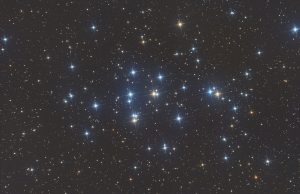As mentioned in ‘Sowing more seeds’ I have been undertaking a course on DNA. I also decided, after resisting for a long time, to upgrade my ‘DNA only’ version of Ancestry. I purchased the UK version.
The list of matches that Ancestry produces can be overwhelming. Correction: it is overwhelming. At the time of writing (May 2024), I have 6100 matches on the maternal side, 5900 on the paternal side, and 7700 that are, as yet, unquantified. That is nearly 20,000 people, and the number is rising all the time.
The obvious place to start is at the top. Those with the strongest connections will be the closest relatives. Only 16 people on my paternal side have a rating of 35 centimorgans or more. Between us, we have established the common ancestor with Number 16 on that list. We worked out that we are 4th half cousins, once removed. The common ancestor was born in Sussex in the 1770s.
I had not realised, until taking the course, was that by clicking on the name of the matches, there is an option to select ‘shared matches’. The ‘DNA only’ version only let me see three names on the list. The full version allows me to see the complete list. Some of those lists are well into double figures. This means that I can group, for example, a Mr. Blue, Mrs Brown, Mr. Green, Mrs White and me into a single cluster. If we have some DNA in common, then it must come from a single place. The challenge is to work out where that might be. Similarly, I can group a Mr. Smith, Mrs. Jones, Mrs. Murphy, Mr. Jenkins and me into another cluster. Again, I still need to identify the common ancestor. What I do know is that the two groups are separate. One cluster might be on Patrick’s mother’s side. Another cluster might be on his grandmother’s side. Or someone quite different!
I can also view the family tree if one has been uploaded. Roughly one person in three has a tree with meaningful content in it. An examination of names and locations provides further clues. If a number of people in a particular cluster have extensive roots in Sussex, then I can be reasonably sure (but not absolutely sure) that the common ancestor lies there.
The main benefit of this approach is that it reduces a massive challenge into a much smaller number of search areas.
Picture: Messier 47, a cluster in the constellation of Cancer. Source: Wikipedia, accessed 15/5/2024

